
Edelweiss - Fotolia
Four common SSD form factors and where they work best
Solid-state drive form factors offer different benefits, from ease of transition to increased throughput. Four popular form factors are currently dominating the market.
An SSD is often described in terms of its form factor, which refers to the drive's size and shape. But SSD form factors can imply more than just a drive's physical dimensions. It can also indicate how the drive connects to a computer, as well as how data is passed between the motherboard and drive.
SSDs are available in a number of form factors, with some types supporting multiple width and length combinations. The four most common SSD form factors in today's market include the 2.5-inch SATA, mSATA, M.2 and Peripheral Component Interconnect Express (PCIe).
2.5-inch SATA form factor
The 2.5-inch SATA form factor is based on the Serial Advanced Technology Attachment standard, which was developed for connecting and transferring data between a computer and HDD. The SATA standard utilizes serial signaling technologies, unlike the older parallel ATA (PATA) standard, which relies on parallel signaling.
SATA can deliver much faster transfer rates than PATA -- 600 MBps compared to 133 MBps. Unlike PATA, SATA supports external drives and the ability to hot swap drives. In addition, SATA uses much thinner cables, which are easier to manage, improve airflow within the computer and enable a computer to support more connectors.
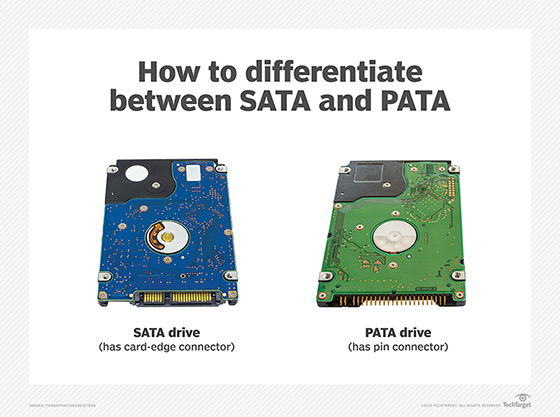
Many SSD vendors adopted the 2.5-inch SATA standard early on because it made transitioning from HDDs and SSDs much easier. Not only could an organization move to the new drives more gradually, but the 2.5-inch size also enabled the SSDs to fit easily into laptop and desktop drive bays. Not surprisingly, this form factor is the most common and affordable of all the major players.
A 2.5-inch SATA drive uses a SATA cable to connect to the computer's motherboard. It also utilizes the Advanced Host Controller Interface (AHCI) bus protocol for transferring data between the computer and drive. The protocol enables advanced SATA features, such as hot swapping and native command queuing, which optimizes how a drive handles simultaneous data requests.
However, because the SATA standard was developed specifically for HDDs, SATA drives cannot take full advantage of the throughput capabilities inherent in SSDs. The SATA interface connector maxes out at about 6 Gbps, well below the SSD's full potential.
MSATA form factor
Some vendors offer a smaller version of the SATA SSD called mSATA, short for mini-SATA. The drive conforms to the mSATA interface specification and is designed for power-constrained devices, such as laptops, tablets and notebooks. The specification is based on mapping SATA signals to a card plugged directly into an mSATA socket on the motherboard.
The mSATA drive is about one-eighth the size of the 2.5-inch SATA drive but can support the same SATA throughput, up to 6 Gbps. In addition to being one of the smaller SSD form factors, the mSATA drive also consumes less power, supports boot and shutdown capabilities and is more resistant to shock and vibration. The smaller form factor also makes the mSATA drive well-suited for commercial products, such as kiosks, digital signs, multifunctional printers and point-of-sale devices.
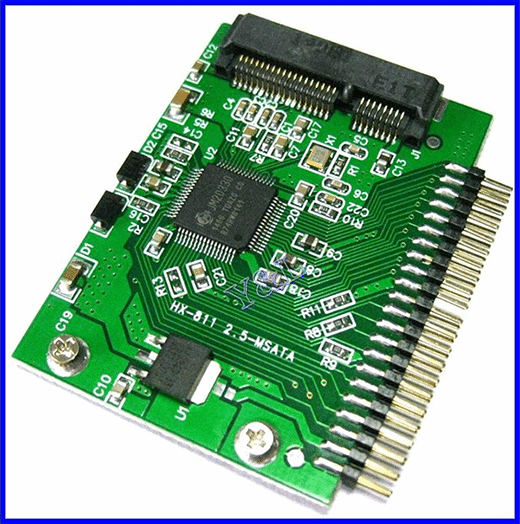
As with the 2.5-inch SATA drive, the mSATA drive relies on the ATA command set to transfer data between the computer and drive. In fact, the only real differences between the two drives are their sizes and how they connect to the motherboard.
M.2 form factor
In 2013, a few years after mSATA emerged, the M.2 form factor debuted, offering a smaller SSD that outperforms and stores more data than the mSATA drive. The new form factor, pronounced M-dot-2, can accommodate the SATA and PCIe interface connectors, as well as USB 3.0, and can be used with either the AHCI protocol or the nonvolatile memory express (NVMe) protocol.
The PCIe connector delivers lower latencies and higher transfer rates than older bus technologies, such as SATA. With PCIe, each bus has a dedicated connection, which means it does not have to compete for bandwidth. The interface also has a smaller physical footprint.
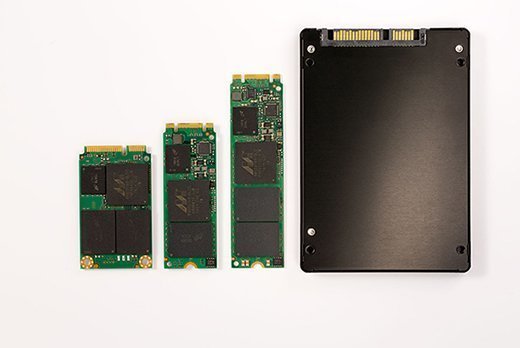
The NVMe protocol, which enables host software to communicate with NVMe subsystems, is optimized for SSDs that use PCIe connectors. NVMe addresses many of the limitations of older storage protocols, while offering substantial gains in performance and throughput.
Unlike the mSATA drive, the M.2 drive supports multiple width and length combinations, with sizes such as 22 mm x 60 mm or 22 mm x 80 mm. A PCIe-based M.2 drive that uses NVMe can support up to four PCIe lanes, making it possible to exceed the 6 Gbps limitations of SATA or mSATA drives. The M.2 form factor originally targeted notebooks, Ultrabooks and tablets but has also found its way into some desktops.
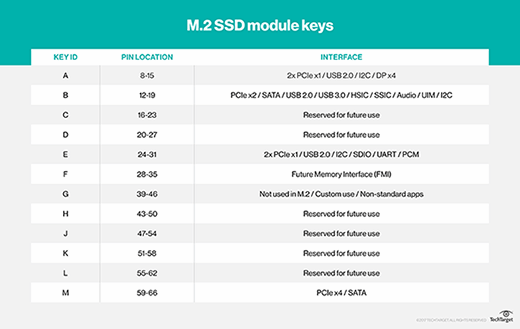
The M.2 drive was designed to take advantage of PCIe's high-speed capabilities and is often considered an mSATA replacement. Although there are still plenty of mSATA SSDs out there, most of the interest in the small-sized market has moved to the M.2 drive because of its ability to reduce latency, increase IOPS and lower power consumption.
PCIe form factor
SSDs based on the PCIe form factor utilize the PCIe interface connector and NVMe protocol to maximize SSD performance. The PCIe drive connects directly to the motherboard via the PCIe expansion slots, which can scale from one to 32 data transmission lanes. The more lanes a drive uses, the better the performance.
PCIe SSDs are the costliest of the four major form factors, but they deliver the fastest speeds, outperforming server-based SATA, as well as serial-attached SCSI and Fibre Channel (FC) drives. Until recently, PCIe drives primarily targeted enterprise deployments, but that has been changing as they make inroads into the consumer market.
The PCIe drive utilizes a point-to-point architecture that boosts data transfer rates, while lowering latencies. Each PCIe drive connects directly to the motherboard via its own serial link. In this way, multiple drives do not need to share the same bus.
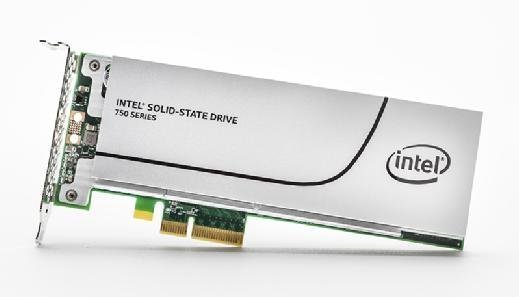
The PCIe drive is larger than the M.2 drive, making it possible to mount more chips on each card, while still providing plenty of room for cooling. Although the size makes the drives more suited for desktops and servers, rather than smaller devices, it also means they can support much higher capacities. Some SSDs are already exceeding the 8 TB mark, with greater capacitates in the wings. The M.2 drive has only recently been able to break the 1 TB barrier.
One of the challenges with the PCIe drive has been that the NVMe protocol is limited to direct-attached drives. As a result, enterprises that relied primarily on distributed storage could benefit little from the NVMe drive. However, the NVMe over Fabrics (NVMe-oF) specification has recently emerged, making it possible to take advantage of the benefits of NVMe across network fabrics, such as Ethernet, InfiniBand and FC. The NVMe-oF protocol uses message-based communications to transfer data between the computer and network-connected drives, enabling organizations to realize the full benefits of SSDs in their data centers.
What's next for SSD form factors?
Solid-state storage is a dynamic market, with new innovations every day. Form factors will continue to evolve, as will the interface connectors and bus protocols that support them. There are other SSD form factors, variations on those discussed here, as well as different form factors altogether.
For example, some vendors offer U.2 drives -- mostly for the enterprise market -- which provide a number of advantages over M.2 drives. Even so, the bulk of SSDs continue to use the 2.5-inch SATA, mSATA, M.2 and PCIe form factors, but it's just a matter of time before something new comes along.






